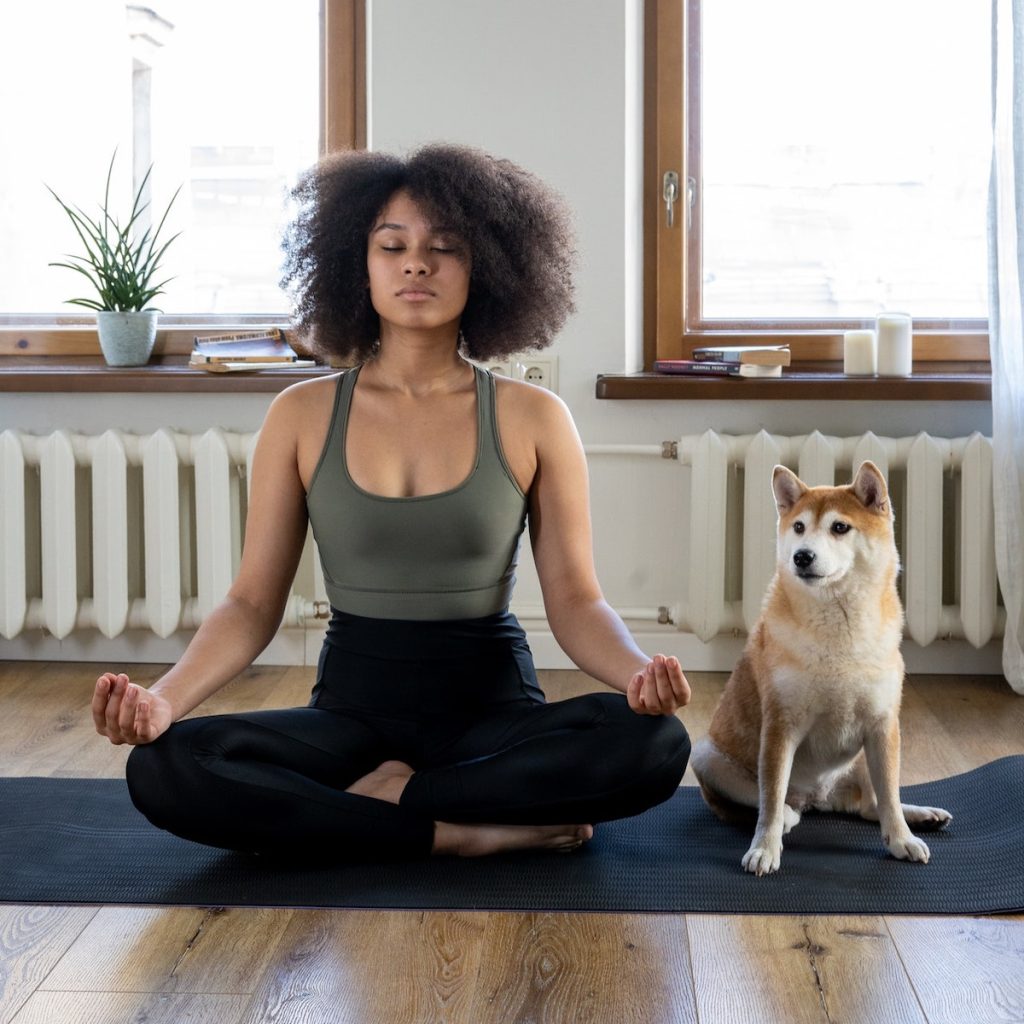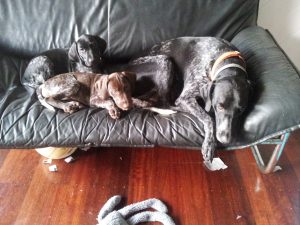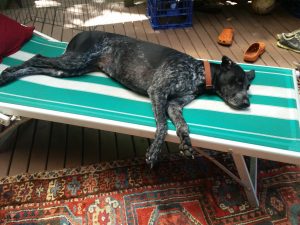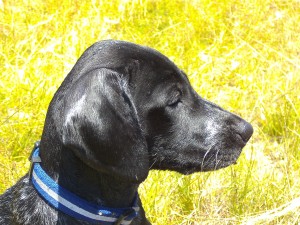What is the most difficult thing to teach our dogs? Coming back, or a great recall? While I do agree that this is a difficult behaviour, I do think teaching calm is much more difficult.
Being calm is not the same as a cued ‘sit stay’ or ‘down stay’. Without becoming too airy fairy: Calm is also not just the absence of arousal, or a heightened state of alert or stress.
For dogs calm means that they are content, happy, and relaxed. They are able to lie on their bed and watch the world go by without barking at every noise or every thing that moves. Calm is a state of mind.
It is normal for puppies to only have two speeds: One is go, go, go and then they crash and go to sleep. For very young puppies calm is not really on the agenda, but we can (and should) start teaching relaxation at a young age. Like everything else calm is age specific and for puppies a few minutes of a relaxing massage or a two second ‘sit stay’ might be all we can expect.
I meet a lot of dogs who are bored out of their minds at home in the backyard, or dogs who spend most of their day alone. They either develop separation distress, related behaviours such as vocalisation, they escape, destructive behaviours, or over attachment and attention seeking behaviours as soon as the owner is home. For dogs who have no job and not enough company, calm is an impossible state of mind
We get dogs as companions and then leave them home alone all day and when we come home we want them to be calm. For most dogs this is too big of an ask!
There are a lot of different ways to provide incentive and an environment that promotes calm. There are also a lot of different protocols to teach calm. In my opinion it is best to use a holistic approach.
First, and probably most important we have to provide adequate outlets for their energy and cater to their social need for companionship. They need physical exercise, brain stimulation and company. If these needs are not met we cannot expect them to be calm.
A lot of dogs love to go out for a walk twice a day. This is not just for physical exercise but also to keep them socially well adjusted. Socialisation, like everything else, requires practice. If they are not exposed to new things in a positive way and in an ongoing basis their social skills will deteriorate very quickly. However, too much physical exercise, especially high arousal activities like the dog park or incessant ball chasing, just increase excitement and high arousal levels.
Second, while most dog owners are aware of their dogs physical exercise needs, they sometimes do not provide adequate mental stimulation. Many dogs, especially working breeds are ‘run into the ground’ every day, spend a lot of time at the dog park but they are never calm or relaxed. They are in a heightened state of alert and arousal at all times because they do not get enough down time and mental exercise.
For their mental exercise provide a few short but fun training sessions every day. Try teaching them a new trick like closing the door and use at least some of their food for enrichment.
Dogs are social animals, they are not made for being left alone for extended periods of time. I do understand that most of us have to work and leave their dogs home alone. Most dogs cope with that if they are not left for excessive periods of time. However, and I repeat myself, if you work full-time, have a busy social life and three children under the age of six years, a puppy or dog might not fit your lifestyle unless you are prepared to make some major changes. Crating your dog while you are at work is not an option. Crate time, especially during the day, should be limited to a maximum of a couple of hours. If you are absent most of the day, look into a good day care, dog walkers or trade dog minding time with neighbours.
Once we have catered to their mental and physical needs we can start teaching behaviours that lead to calm. Such as:
- Teach a go to mat and relax: This can start out as a ‘drop stay’ exercise, in the beginning facilitate with a chew. The dog learns to happily chew on the bed and relax.
- Teach impulse control: Typical exercises for this are look at me, hand target, wait, or lie down. The one I like most is ‘Doggie Zen’ (sorry I really cannot remember where I got it from) but for me it works like this: You ask your dog to sit, show the dog the treat, hold your hand with the treat at arm length away from your eyes at eye level and wait until the dog takes the eyes off the treat and looks at you. You have to be quiet. If your dog jumps up calmly put your hand with the treat behind your back and start again. Once you get eye contact, click or say yes and reward. In the beginning you reward for every glance! That is not a cued behaviour but a relaxation exercise.
- Capture calm: Interestingly most owners miss their dog’s calm behaviour. A typical scenario is the dog calm on her bed and getting ignored. However, as soon as she gets up there is a reaction from the owners. By mistake the getting up is rewarded while calm is ignored. This tells the dog being calm is not worth doing. We need to change our approach and capture calm. While this is not training per se, it should be a major part of our relaxation protocol. When you see your dog in a relaxed state of mind calmly with a low, gentle voice tell them they are a good dog. Do not use treats, do not move towards them. Otherwise they might go right back into working mode. Dogs do no come pre-programmed to know what we want, so we have to let them know.
Also, a gentle massage or listening to music such as Through a Dog’s Ear are other ways of promoting calm and relaxation.
In my opinion calm is more than just a behaviour and while we can and should teach preliminary behaviours such as ‘go to mat’, doggie Zen, ‘wait’, ‘pay attention’ or ‘lie down’ calm is a state of mind. Our dogs can only reach this state of mind if their physical, mental and social needs are met and if they live in an environment that promotes calmness.
It is a bit like focus, which is a state of mind that cannot be reached with training of attention cues such as ‘look at me’ or ‘touch’, but depends on the relationship and connection we have with our dogs. And that is a topic for another blog!
Barbara Hodel – Goodog owner
First published by the Pet Professional Guild.







